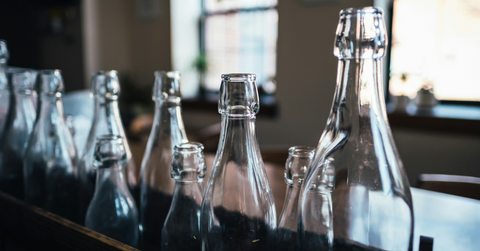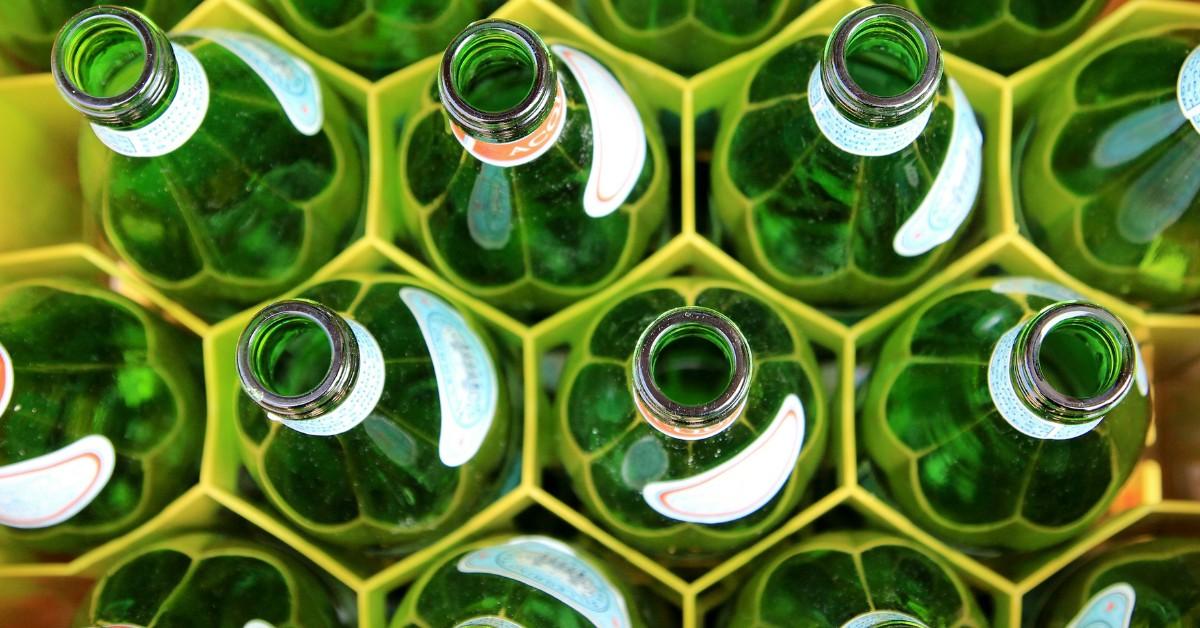Study Finds Glass Bottles Contain a Surprising Amount of Microplastics
Microplastics truly are everywhere.
Published July 23 2025, 2:16 p.m. ET

By now, many of us have already learned about microplastics. They are the small — under five millimeters long — pieces of plastic that are typically manufactured in the form of pellets, fibers, capsules, or microbeads.
Microplastics can also come from larger pieces of plastic that have been broken down somehow, creating smaller pieces of the larger item.
Microplastics have been found in everything from breastmilk to The Great Lakes.
A French study claims to have found microplastics in a surprising new place: Glass bottles. According to the findings, the researchers say glass bottles contain more microplastics when holding certain liquids. Want to know more? Keep reading to find out.

Glass bottles contain more microplastics than expected.
The news was published in a peer-reviewed study that ran in the Journal of Food Composition and Analysis. The August 2025 volume shared the findings from France's food safety agency, which was tasked with testing the levels of microplastics in beverages.
While the agency says that microplastics were found in all of the samples of soft drinks, water, wine, and beer that they tested, they were noticeably highest when collected from glass bottles.
Alexandre Dehaut, one of the study's co-authors, told The Guardian that he found the news "very surprising." So, why did the beverages in glass bottles seem to have the most microplastics? Dehaut says that the lids appear to be to blame.
“Caps were suspected to be the main source of contamination, as the majority of particles isolated in beverages were identical to the color of caps and shared the composition of the outer paint,” he said.
How do microplastics get into glass bottles?
If you're wondering how the plastic from the caps gets into the beverages, Dehaut says that it has to do with how the caps are stored after they are made, but before they are put on the glass bottles.
Dehaut says that the caps are often stored with other caps after they are produced. During that time they get jostled around, causing the caps to rub up against one another, creating tiny chips and scratches.
Once the caps are added to the bottles, the microplastics generated from the caps ends up in the beverages. Dehaut even noted that they were able to see the small scrapes on the lids once they looked at them under a microscope, and they were able to match the color of the lids with the plastics found in the beverages, confirming their theories.
Fortunately, this seems to be a problem with an easy solution, as Dehaut says that manufacturers may be able to rinse the caps and blow them dry before sealing the glass bottles with them, eliminating the drink's exposure to the microplastics.
However, the study's authors did note that they found microplastics that couldn't be matched to the caps during their research, which means that they either entered the bottle at another point during the production process, or were already in the liquid.
Still, the public shouldn't worry about the safety of their beverages yet. Little is known about the long-term effects of microplastics, and Dehaut says more research should be done before anyone gets too worked up about the findings.